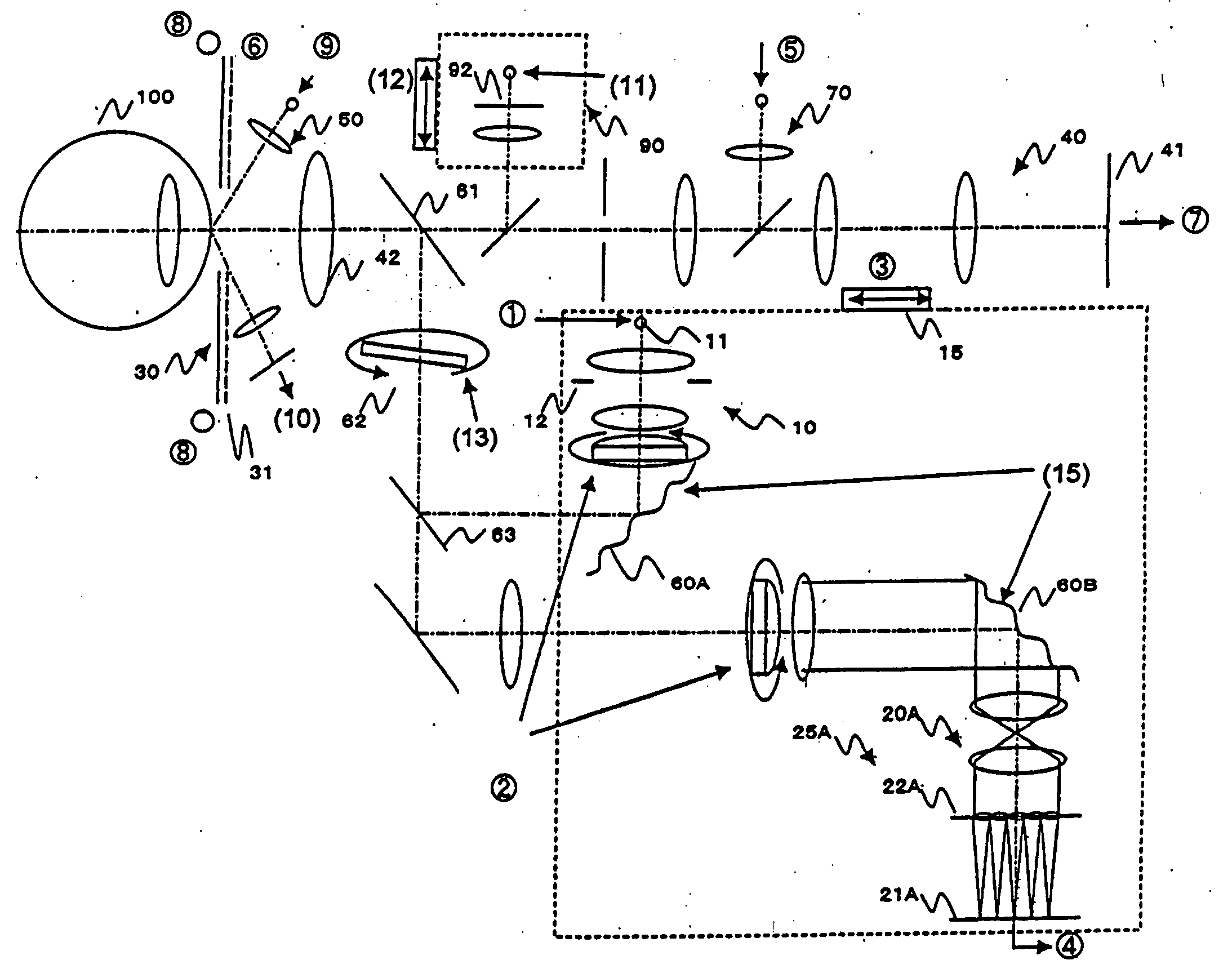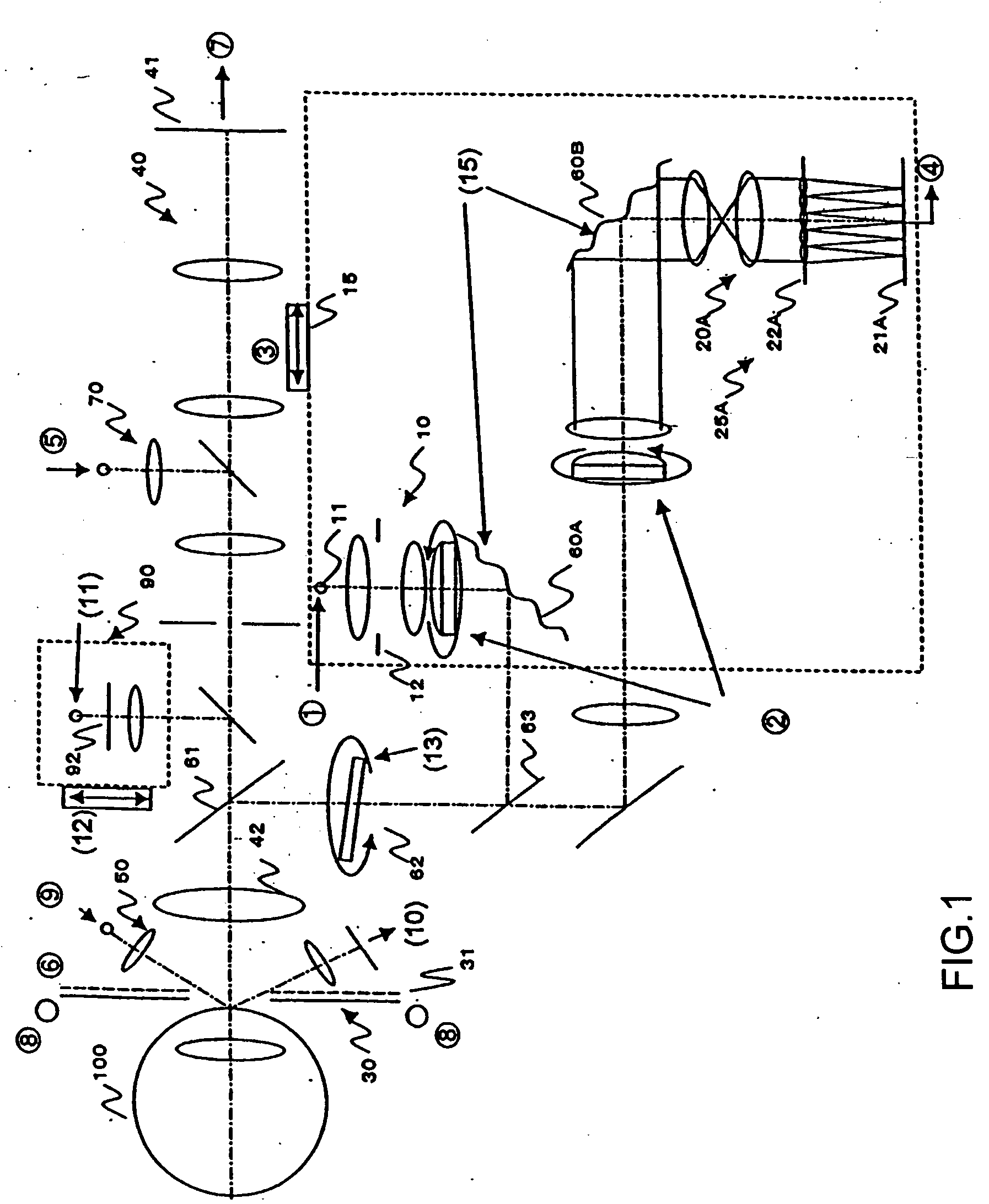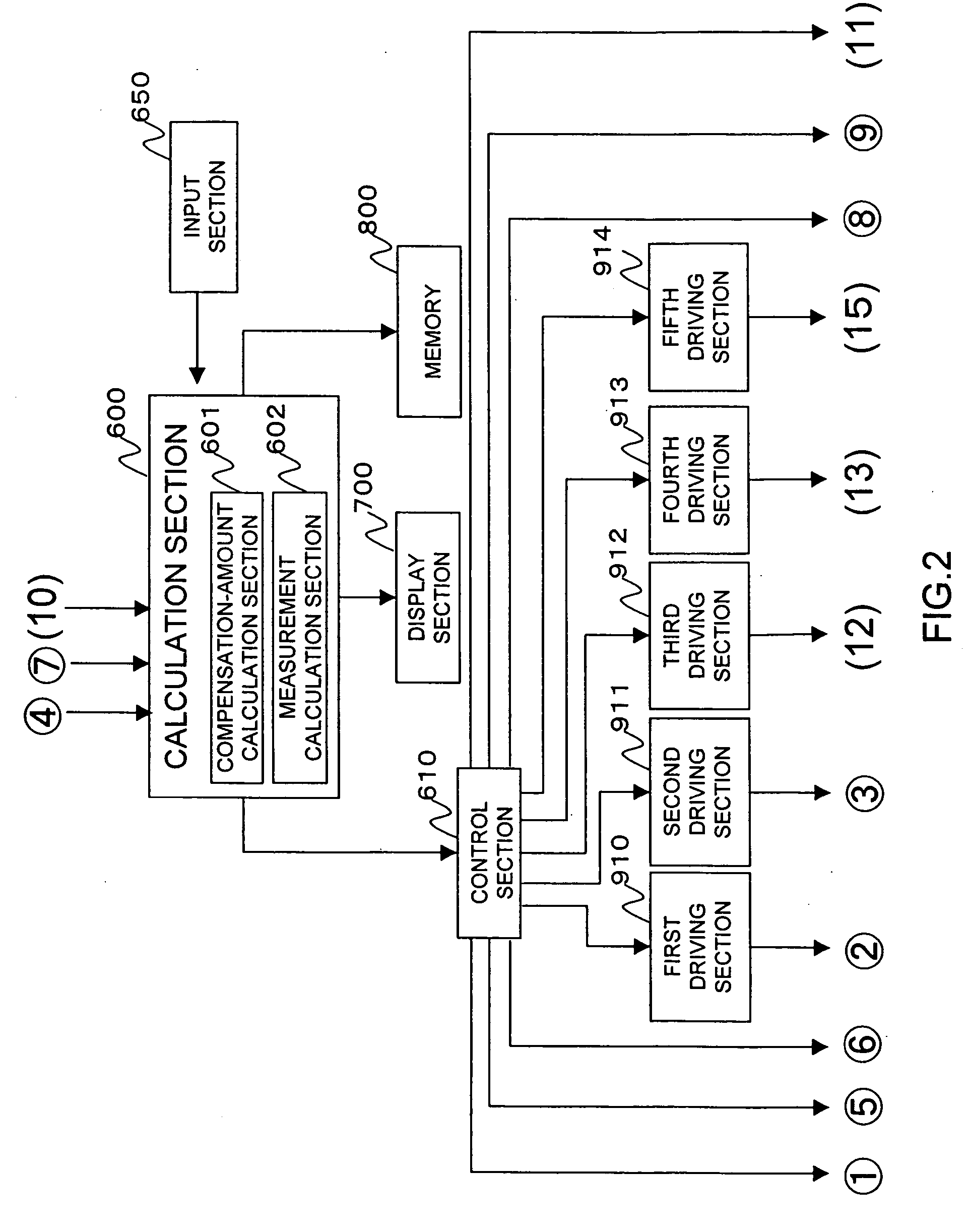Eye characteristics measuring system
a measurement system and characteristic technology, applied in the field of eyecharacteristics measurement apparatuses, can solve the problems of double-path measurement, wide (large-diameter) beam, and difficult correct measurement,
- Summary
- Abstract
- Description
- Claims
- Application Information
AI Technical Summary
Benefits of technology
Problems solved by technology
Method used
Image
Examples
first embodiment
1. First Embodiment
(Optical-System Structure)
[0118]FIG. 1 is a view showing the structure of an optical system according to a first embodiment.
[0119] An eye-characteristics measurement apparatus includes a first illumination optical system 10, a first light-source section 11, a first measurement section 25A, an eye-front-part illumination section 30, an eye-front-part observation section 40, a first adjustment optical section 50, a first compensation optical section 60A, a second compensation optical section 60B, a second adjustment optical section 70, and an eyesight-target optical section 90. The first measurement section 25A has a first light-receiving optical system 20A and a first light-receiving section 21A. In an eye 100 under measurement, a retina (eyeground) and a cornea (eye-front part) are shown in the figure.
[0120] Each section will be described below in detail.
[0121] The first illumination optical system 10 illuminates a minute area on the eyeground of the eye 100 ...
second embodiment
2. Second Embodiment
(Optical-System Structure)
[0170]FIG. 7 is a view showing the structure of an optical system according to a second embodiment. FIG. 7 shows only a portion corresponding to that enclosed by the dotted line in FIG. 1, but the other portions are the same as those shown in FIG. 1. An eye-characteristics measurement apparatus shown in FIG. 7 further includes a second measurement section 25B having a short focal length, a low sensitivity, or a high density, and a beam splitter 23. A first conversion member 22A according to the present embodiment is a wavefront conversion member having a lens section with a long focal length or a high sensitivity. It is preferred that the second measurement section 25B be configured to have a short focal length, a low sensitivity, and a high density. The first conversion member 22A may be configured to have a long focal length and a high sensitivity.
[0171] The second measurement section 25B has a second light-receiving optical system ...
third embodiment
3. Third Embodiment
[0181]FIG. 9 is a view showing the structure of an optical system according to a third embodiment. FIG. 9 shows only a portion corresponding to that enclosed by the dotted line in FIG. 1, but the other portions are the same as those shown in FIG. 1. In the optical system shown in FIG. 9, a second compensation optical section 60B is inserted in common into first and second measurement sections 25A and 25B. A light beam reflected and returned from the retina of an eye 100 under measurement is led to the first and second measurement sections 25A and 25B through the second compensation optical section 60B. Since the optical beam is led to the second measurement section 25B through the second compensation optical section 60B, aberration obtained after compensation can be measured even in the second measurement section 25B. In addition, it is possible that the first and second compensation optical sections 60A and 60B are deformed until aberration measured at the output...
PUM
 Login to View More
Login to View More Abstract
Description
Claims
Application Information
 Login to View More
Login to View More - R&D
- Intellectual Property
- Life Sciences
- Materials
- Tech Scout
- Unparalleled Data Quality
- Higher Quality Content
- 60% Fewer Hallucinations
Browse by: Latest US Patents, China's latest patents, Technical Efficacy Thesaurus, Application Domain, Technology Topic, Popular Technical Reports.
© 2025 PatSnap. All rights reserved.Legal|Privacy policy|Modern Slavery Act Transparency Statement|Sitemap|About US| Contact US: help@patsnap.com



